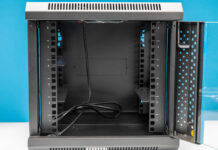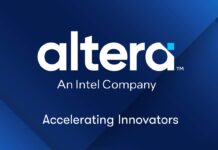Intel Pentium Silver J5005 Power Consumption
We wanted to post a few figures from our testing that show the real selling point of the chips, low power.
Idle is around 9W and maximum power consumption hits just under 17W in our test bed. That low power consumption is helped by the fact that there is no BMC onboard and no fans needed for the platform. On the other hand, the RAM, drives, and NICs use a considerable amount of power.
Note these results were taken using 120V power, so 208V and higher may see lower power consumption.
Intel Pentium Silver J5005 Market Positioning
Thes chips are not released in a vacuum instead, they have competition on both the Intel and AMD sides. When you purchase a server and select a CPU, it is important to see the value of a platform versus its competitors.
Intel Pentium Silver J5005 v. Intel Alternatives
At $161, there is one thing one can be certain of: you are paying a premium for the performance this part offers. We did this benchmark piece to look at CPU performance, but realistically if you want the highest performance in this price range the Intel Core i3-8100 makes a better server processor. It also has more PCIe 3.0 lanes than its Atom counterpart.
Compared to the Intel Atom C3000 series, one gets an Intel UHD Graphics 605 GPU with the J5005 which means it can support display outputs for digital signage. That includes 4K signage. The Intel Atom C3000 series has significantly better I/O with available features like 10GbE, more PCIe and SATA III ports and only slightly higher TDP.
Overall, we understand this niche, and there is one for an extremely low power part. Fanless matters and it means that our Fujitsu test system was completely silent and more durable than it would have been with a fan. We feel the pricing on the chip itself is high.x
Intel Pentium Silver J5005 v. AMD Opteron X3421
We recently published our AMD Opteron X3421 Benchmarks and Review. The AMD Opteron trades more power consumption for better I/O, a lower cost, but similar performance.
We think that for fanless applications, the Intel Pentium Silver J5005 is the better bet. If other factors are a constraint, AMD has a compelling product in this segment.
Final Words
When Fujitsu approached STH about reviewing its platform, we were initially worried that performance would suffer given a 10W TDP part. Instead what we found was a SoC that was able to perform well while offering complete silence. We wish that Intel included a bit more I/O as having the ability to handle a PCIe 3.0 x4 NVMe SSD, wireless networking, 1GbE networking, and four SATA drives would make this a category killer in the NAS segment. We also understand what Intel is doing with this product and think the execution on the product definition was done quite well. STH will have a review of the complete system soon.




Patrick, why do you always write “Python Linux 4.4.2 Kernel Compile Benchmark”? What does python have to do with compiling the Linux kernel?
Hi Marcelo B. This is the second version of our Linux Kernel Compile benchmark that was one of the first ones we launched via a Python setup script. It is just a label to differentiate this versus our older one.
@ Author,
The $161 is basically a placeholder for CPUs like these. The Asrock J5005 motherboard with the J5005 chip integrated costs $119 in Newegg, which is same as what the i3 8100 goes for at the same site.
Consumer level tests show 30-40% gain over the Goldmont predecessor due to significant uarch changes. I’m surprised the gain is less compared to the C3558.
Any idea where to get about 3 dozens of these?
cant seem to find it online, the websites that list this restrict buyers to their customers and i can’t even register.
Our review of the platform is in the final editing stages and hopefully today/ tomorrow it will go live.
Your best bet is to call a Fujitsu reseller.
https://www.impactdisplaysolutions.com/ Their website is currently down but I was on it yesterday. They sell them. Price looks to be around $180 for the mobo so I’m not sure its a good value compared to the ODROID-H2
When will intel start manufacturing this CPU? No where has it in stock.
ASRock is selling a Mini-ITX board based on the J5005.
The have been impossible to get for over a year, but recently I have found some supplies, tested an initial one and then bought three more. The main purpose was to build a silent and low-power oVirt three node hyperconverged cluster with a ‘remote’ backup in the home-lab for concept testing.
The real crunchers is that with 2 DDR4 SO-DIMM slots you can fit 32GB of RAM into a silent little box, together with as much SATA-SSD you’re wishing to spend on. Got a sweet €99/piece deal on Samsung 860 EVO 1TB the other day and snatched those as well.
Another nice thing is the appearance of RealTek 8156 based USB3 2.5Gbit controllers which allow you to fit a secondary 2.5Gbit Ethernet interface for around €40 (hope that price comes down significantly), which is perhaps not quite as balanced as a 5Gbit variant would be for that platform, but evidently 5Gbit PHYs eat too much power. Still it delivers 200MB/s from an Atom, probably a good match for the Gluster underneath oVirt.
I benched the first system on Windows 10, too and was quite impressed. I have several Atoms J1900, N3700 and N3450 and the increases both in CPU and GPU power have been far bigger than in the desktop arena during that time. Even on 4k@60Hz interactive response was very snappy (the J1900 was much harder to endure even at THD), any ordinary Office and Browser work was totally acceptable. As my benchmark proved out, it is quite capable of replacing any 3.5GHz Phenom II quad or 3.4GHz Penryn Core-2 quad, even Sandy Bridge i7 only just get away on multi-core workloads using almost an order of magnitude more power.
Among the Linux desktops I find that Cinnamon offers both the best mix of performance and ergonomics, using the relatively strong GPU to full advantage while GNOME and KDE require much more CPU power even with GPU acceleration, while pure software rendering with MATE at 4k stops being fun even with 5GHz Kaby Lakes.
Turns out, the heavy Ansible scripting in oVirt suffers significantly from ‘not-quite-server-class’ CPUs, but that’s telling more about how badly those frameworks waste CPU power than about this CPU, which performs admirably on properly compiled code, and even on Javscript-overfed websites, developed on and for an iMac target.
BTW: The second DDR4 DRAM channel doesn’t pay back in performance, only in capacity and power consumption: You get a lowly 8GB/s on a single DDR4-2400 module and 9.3GB/s on a dual setup, even if it’s officially operated as dual channel. The Atom’s ‘Northbridge’ simply can’t keep up with the DRAM speed.
But you can’t get affordable 16GB SO-DIMM sticks at DDR3L.
The ‘Intel-official’ 8GB RAM capacity limit on Atoms seems to have been a lie from day one: I’ve had 16GB running on J1900 and N3700 w/o problems (as did anybody else who tried, evidently).
How does this MB fair up compared to the N3700 from AsRock?
It has 0.1 Ghz less base clock but 0.4 Ghz faster at boost/turbo.
Also it has DX12 / UHD graphics compared to N3700 DX11 / HD.
I want to upgrade for better video editing properties.
Any thoughts?